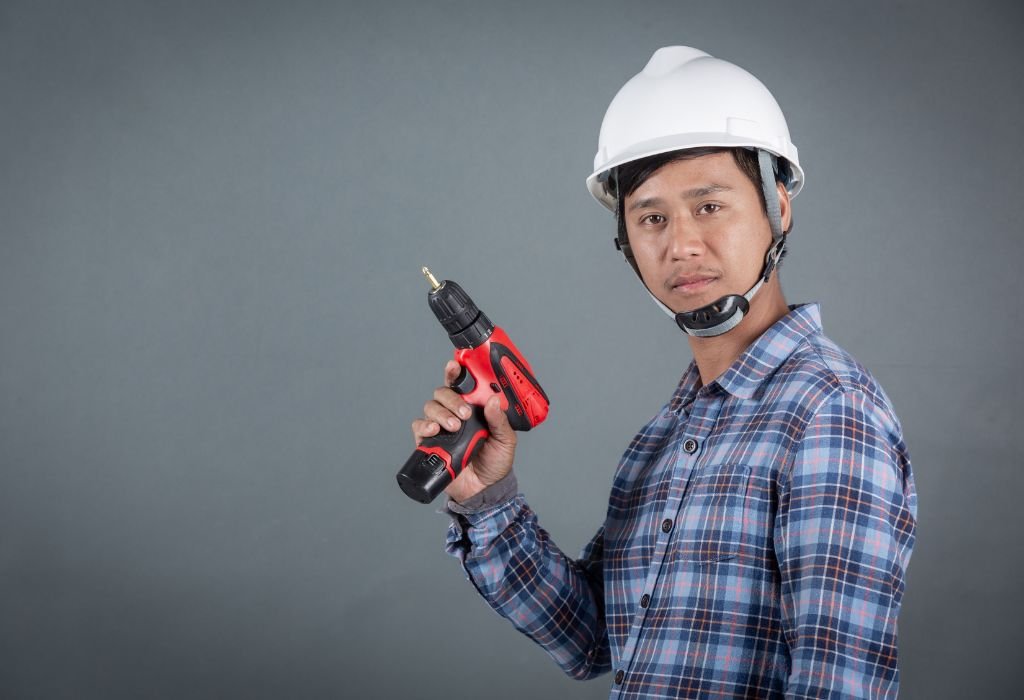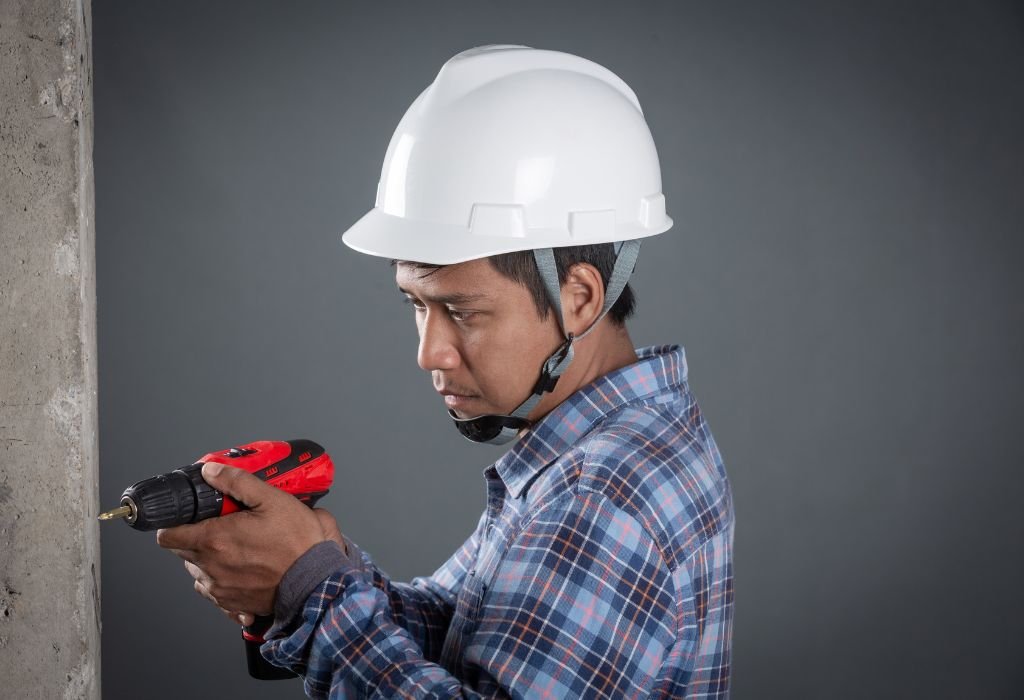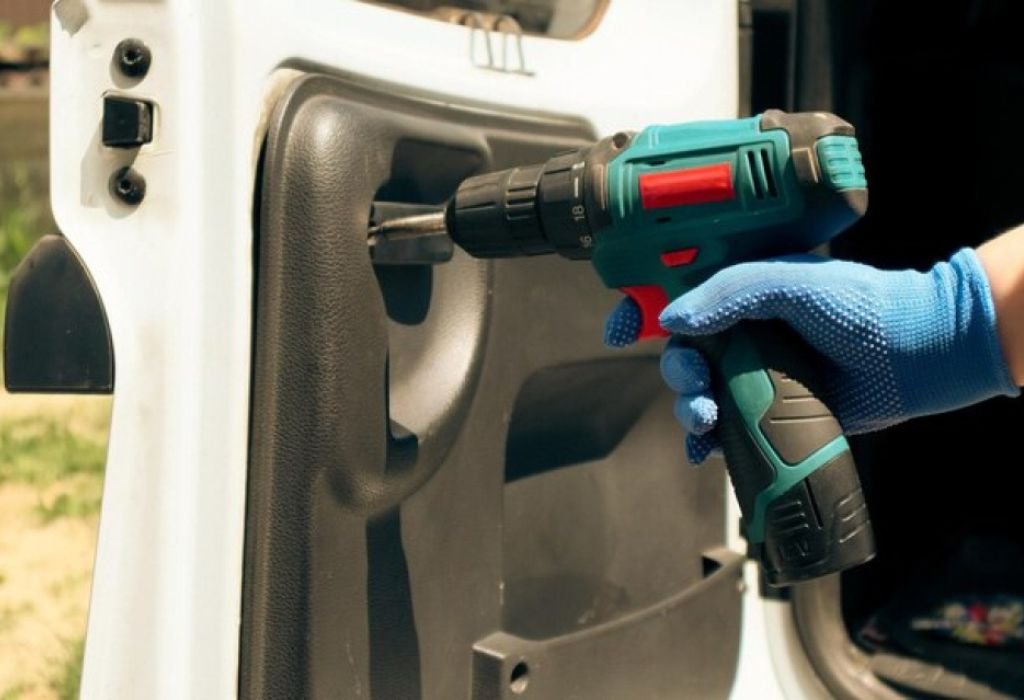Many homeowners buy an impact driver but struggle to use it correctly. The result is often stripped screws, broken bits, or even wasted materials.
At first glance, an impact driver looks like a standard drill. Yet the way it delivers torque through rapid concussive blows makes it very different.
The question “how to use an impact driver” matters because using it the wrong way can shorten tool life and increase risks. For beginners, understanding the right techniques saves time and frustration.
According to Statista, the global power tools market is valued at over $34 billion in 2024, with impact drivers among the fastest-growing categories 【https://www.statista.com/statistics/1310820/power-tools-market-value/】. This growth is fueled by both professional contractors and the rising number of DIY enthusiasts.
Impact drivers are especially popular for driving long screws and bolts into dense materials. Their unique design makes them more efficient than drills in heavy-duty fastening tasks.
Still, many users try to use them like regular drills and end up making costly mistakes. Safety concerns also arise, with tool-related injuries sending more than 135,000 people to emergency rooms every year in the U.S. 【https://www.cpsc.gov/Research–Statistics/NEISS-Injury-Data】.
Learning the correct way to operate an impact driver prevents these problems. With a few simple steps, it becomes one of the most powerful and reliable tools in any toolbox.
This guide will explain how an impact driver works, the step-by-step process of using one, safety measures to follow, and mistakes to avoid. It will also compare drills vs. drivers and share pro tips for getting the best results.
What Is an Impact Driver?

An impact driver is a power tool designed to drive screws and bolts with high torque. It combines rotational force with concussive impacts to push fasteners into dense materials.
Unlike a drill that provides constant rotation, an impact driver delivers bursts of force that prevent bits from slipping. This design makes it especially effective in heavy-duty construction and woodworking projects.
Impact drivers are lighter and more compact than drills, making them easier to handle in tight spaces. They are widely used for assembling decks, furniture, and structural framing.
The tool uses a quick-release ¼-inch hex chuck that holds impact-rated bits securely. This feature ensures less cam-out and safer fastening.
What is an impact driver used for?
It is used for driving screws and bolts into tough materials with high torque.
How does it differ from a drill?
It delivers rapid rotational impacts instead of constant spinning.
Do I need one if I already have a drill?
Yes, because drills excel at drilling holes while impact drivers handle fastening.
Is it only for professionals?
No, DIYers can also benefit from the efficiency and control it provides.
Essential Safety Tips Before Using an Impact Driver
Safety should always come first when operating high-torque tools. Proper protection and preparation reduce the risk of accidents and tool damage.
Always wear safety glasses to protect against flying debris. Gloves can provide extra grip and protect your hands from vibrations.
Use only impact-rated bits designed to withstand high torque. Regular bits may snap and send sharp fragments flying.
Secure your workpiece before driving screws. A stable surface ensures better accuracy and prevents slipping.
Can I use regular drill bits?
No, always use impact-rated bits to avoid dangerous breakage.
Why are safety glasses important?
They protect against fragments from stripped screws or broken bits.
Do impact drivers kick back?
Yes, high torque can cause sudden jerks if not controlled.
Should beginners practice first?
Yes, practicing on scrap materials builds confidence before tackling real projects.
Step-by-Step Guide: How to Use an Impact Driver
Using an impact driver correctly involves a few key steps. Each step ensures safety, efficiency, and clean results.
Start by selecting the correct bit for the screw or fastener you are using. Insert it into the quick-release chuck until it locks securely in place.
Position your workpiece so it is stable and supported. If possible, clamp it down to prevent unwanted movement.
Hold the tool with a firm grip, placing one hand on the handle and the other steadying the body. Keep your stance balanced to handle sudden torque.
Place the bit directly into the screw head and align it straight. Misalignment often causes stripped screws and wasted effort.
Apply light forward pressure and slowly squeeze the trigger. Allow the tool to generate the force rather than pushing hard yourself.
Let the concussive action drive the screw until it is flush with the material. Release the trigger once the fastener is fully set.
How hard should I press?
Apply steady but light pressure — the tool supplies the force.
Do I need to pre-drill holes?
Yes, for hardwood and metal, pre-drilling prevents splitting and improves accuracy.
Should I feather the trigger?
Yes, short bursts give you better control and prevent overdriving.
How do I stop stripping screws?
Keep the bit aligned and use the correct size for the screw head.
Common Mistakes to Avoid
One of the biggest mistakes is using non-impact bits. These are not built to withstand torque and break easily.
Another mistake is overdriving screws into the material. This damages both the fastener and the surface, weakening the joint.
Many beginners forget to maintain control of the tool. The high torque can cause sudden jerks that lead to accidents or misalignment.
A common error is using an impact driver for drilling holes. It is not designed for precision drilling and often damages drill bits.
Why do bits keep breaking?
They are not impact-rated or have become worn from heavy use.
Why are screws stripping?
Improper alignment or applying too much torque causes stripping.
Can I drill holes with it?
Not efficiently, because it is made for fastening rather than drilling.
Why does it feel too loud?
Impact drivers make more noise due to the hammering mechanism inside.
Applications: Where an Impact Driver Works Best

Impact drivers excel at driving long screws into hardwood and treated lumber. They can handle fasteners that would cause a regular drill to stall.
They are ideal for deck building, framing, and construction projects. Their compact size allows them to fit into tight spaces with ease.
These tools also work well for furniture assembly, where multiple screws must be driven quickly. A magnetic bit holder makes the process even faster.
They are also useful for driving bolts and lag screws in metalworking projects. However, for very large bolts, an impact wrench is better suited.
Can it drive long screws easily?
Yes, it is especially effective for long and stubborn fasteners.
Is it good for automotive use?
Yes, but only for smaller bolts. Larger ones require an impact wrench.
Can it replace a drill?
No, because it cannot drill precise, clean holes.
Is it good for DIY furniture projects?
Yes, it speeds up assembly and reduces hand fatigue.
Impact Driver vs. Drill — Which Should You Use?
Drills are best for making holes and performing light fastening tasks. They offer precision but lack the torque for heavy-duty driving.
Impact drivers provide unmatched torque, making them ideal for screws and bolts in dense materials. They are not as precise for drilling.
Most professionals and serious DIYers use both tools. Each serves its purpose and complements the other.
For beginners, a drill is a more versatile first purchase. An impact driver becomes essential once heavier projects are tackled.
Which is better overall?
Neither — they serve different purposes and complement each other.
Can an impact driver replace a drill?
No, because it is not efficient for drilling holes.
Do professionals use both?
Yes, because the combination covers all tasks.
Which should I buy first?
A drill for general use, then an impact driver for heavy-duty work.
Choosing the Right Impact Driver and Bits
Select an impact driver with enough torque for your projects. Models with 1,200–1,800 in-lbs are ideal for most DIY applications.
Brushless motor models are more efficient and have longer lifespans. They also consume less battery power during extended use.
Always use impact-rated bits with torsion zones. These prevent breakage and handle the high torque safely.
Choose reputable brands like DeWalt, Milwaukee, Makita, or Bosch. They provide reliable tools and a wide range of compatible accessories.
What torque should I look for?
1,200–1,800 in-lbs is sufficient for most home and construction use.
Are brushless impact drivers worth it?
Yes, they offer better efficiency and tool life.
Which brands are most reliable?
DeWalt, Milwaukee, Makita, and Bosch are widely recommended.
Do bit coatings matter?
Yes, titanium or black oxide coatings extend the lifespan of bits.
Advanced Tips for Better Results
Use magnetic bit holders to improve screw retention and reduce drops. They make overhead and angled work much easier.
Practice feathering the trigger for greater control over screw depth. This prevents damage to surfaces and fasteners.
Match the bit type to the screw head. Phillips, Torx, and Square heads require the correct bit size to avoid slipping.
Keep a balanced stance and firm grip to handle sudden torque safely. A controlled body position prevents accidents.
Why use magnetic holders?
They reduce dropped screws and improve precision.
What’s the best way to control depth?
Pulse the trigger lightly near the end of the drive.
Can I use extension bits?
Yes, they help reach fasteners in tight spaces.
Should I lubricate screws?
Yes, when driving into hardwood or metal to reduce resistance.
Future of Impact Drivers

Cordless lithium-ion technology is making impact drivers more efficient. Batteries last longer and charge faster than older models.
Brushless motors are becoming the standard, reducing wear and improving performance. They also extend runtime per charge.
Designs are trending toward compact and lightweight tools. This makes them easier to use in overhead or confined spaces.
Smart impact drivers with digital torque sensors are being developed. These provide greater control and reduce the risk of overdriving.
Will impact drivers get smaller?
Yes, manufacturers are focusing on compact, ergonomic designs.
Will batteries last longer?
Yes, lithium-ion advancements improve performance and runtime.
Are smart tools real?
Yes, some models already include digital tracking and torque control.
Is demand increasing?
Yes, both DIY and professional use are rising worldwide.
Conclusion
Impact drivers are powerful, versatile tools designed to handle fastening tasks that drills cannot. Their unique design delivers high torque with precision and efficiency.
Learning how to use an impact driver correctly ensures safety, prevents stripped screws, and extends tool life. Following a few simple steps makes it an easy and reliable tool for any project.
Avoid common mistakes such as using non-impact bits or overdriving screws. Instead, use the right bits, maintain control, and let the tool do the work.
For anyone asking “how to use an impact driver,” the answer lies in preparation, proper technique, and the right accessories. Master these, and you will use the tool like a pro in no time.

I’m John F. Nicholas, the founder, lead writer, and drill enthusiast behind 101drill.com. With years of hands-on experience in power tools and DIY projects, I created this platform to share practical knowledge, expert tips, and real-world insights to help others master the art of drilling.
